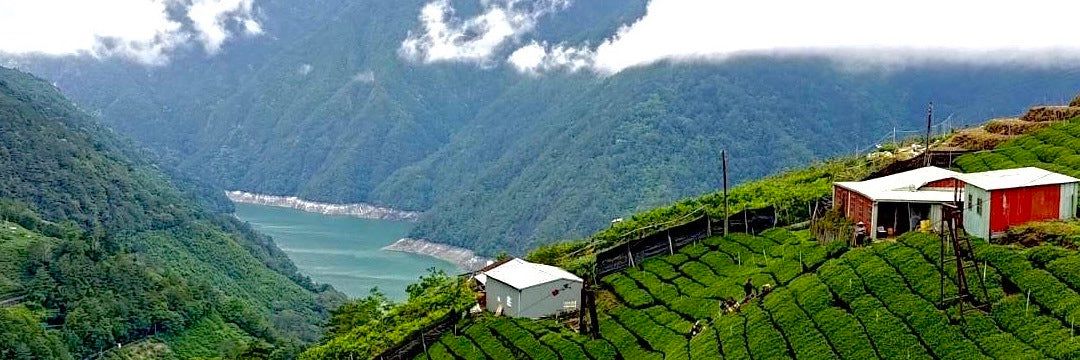
Li Shan High Mountain Oolong Spring Tea 2023

Spring harvest of Li Shan High Mountain Oolong Tea produced better results than perhaps anywhere else on Taiwan this year. This is due to the fact that the Li Shan tea producing region is at the highest elevation, making it the latest harvest in spring and the earliest harvest in winter.
The reason that later means better this year is that spring rains arrived very late, and there was little or no rain until late April. Alishan and Shan Lin Xi High Mountain Tea growing regions typically begin spring harvest at the end of April. This was delayed due to a very slow and also sparse spring crop. Li Shan was less delayed, and since the growing season is naturally later at highest elevation, it was less affected by the lack of rain in early spring.

In addition to the higher elevations alleviating the lack of rain, our source of Li Shan Tea is situated directly above the De Ji Reservoir, and is downwind from this large body of water — offering a micro-climate that is ideal for tea cultivation. On a daily basis, moisture from the reservoir rises from the valley floor and envelopes the surrounding ridges in cool fog. Indeed, this is why we decided on this farm as our ongoing source, along with the fact this husband and wife team are literally the most in-demand tea producers we know. They started with nothing 30 years ago, and have worked very hard to achieve their current status. We admire them a great deal, and they are really nice people!

The two sons of the farmer couple are now representatives of their family tea enterprise, and we work with the younger son — simply because he and his wife were who we met upon showing up out of nowhere at their factory on a motorcycle some years ago! He presented us with the days of harvest that followed a few days of rain after the beginning of the harvest. When we visited, their were still two or three days to go, but we felt that the "middle days" most likely offered the prime crops. There were significant variations among the four days of harvest shown above. Different slopes on the ridge grow differently.

A standard tasting method in tea factories is to brew 6g of tea leaves in a tea judging bowl (approx. 150mL). This offers a visual assessment of the dried leaves, as they are brewing, and when they are fully reconstituted. The aromatic profile can be assessed by dipping the spoons in the tea as it brews. The color and clarity of the brewed tea can be assessed by pulling the leaves to one side. And finally, the tea can be tasted repeatedly — as it brews, and incrementally becomes stronger in flavor.
We eliminated one out of the four with the first infusion, then brewed the leaves a second time. This reveals a fuller spectrum of flavor that each batch has to offer. One of the three had a very soothing, smooth character, but was just a bit too oxidized to represent our spring Li Shan Tea. Another was very young leaves that produced an amazing aromatic profile, but was a bit too green and vegetal on the palate. The third was just a bit more mature than the second, and noticeably more oxidized, while remaining fresh and vibrant. This was our pick of choice. It turns out that there was only one bulk bag left from this day's harvest. So evidently, the big buyers before us chose this one as well!
If this tea sounds interesting to you, get some here!
LET US KNOW!
Please post any questions or comments you may have in the comments section below!
SUBSCRIBE!
If you enjoyed this post and would like to hear more about the specialty tea industry here in Taiwan, follow us on YouTube, Facebook, and Instagram and please subscribe to our newsletter. Subscribe now and get US$5 off your first order.

